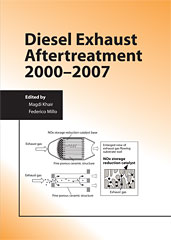Technical Paper
A numerical Methodology for Induction Motor Control: Lookup Tables Generation and Steady-State Performance Analysis
2024-04-09
2024-01-2152
This paper presents a numerical methodology to generate lookup tables that provide d- and q-axis stator current references for the control of electric motors. The main novelty with respect to other literature references is the introduction of the iron power losses in the equivalent-circuit electric motor model implemented in the optimization routine. The lookup tables generation algorithm discretizes the motor operating domain and, given proper constraints on maximum stator current and magnetic flux, solves a numerical optimization problem for each possible operating point to determine the combination of d- and q- axis stator currents that minimizes the imposed objective function while generating the desired torque. To demonstrate the versatility of the proposed approach, two different variants of this numerical interpretation of the motor control problem are proposed: Maximum Torque Per Ampere and Minimum Electromagnetic Power Loss.

